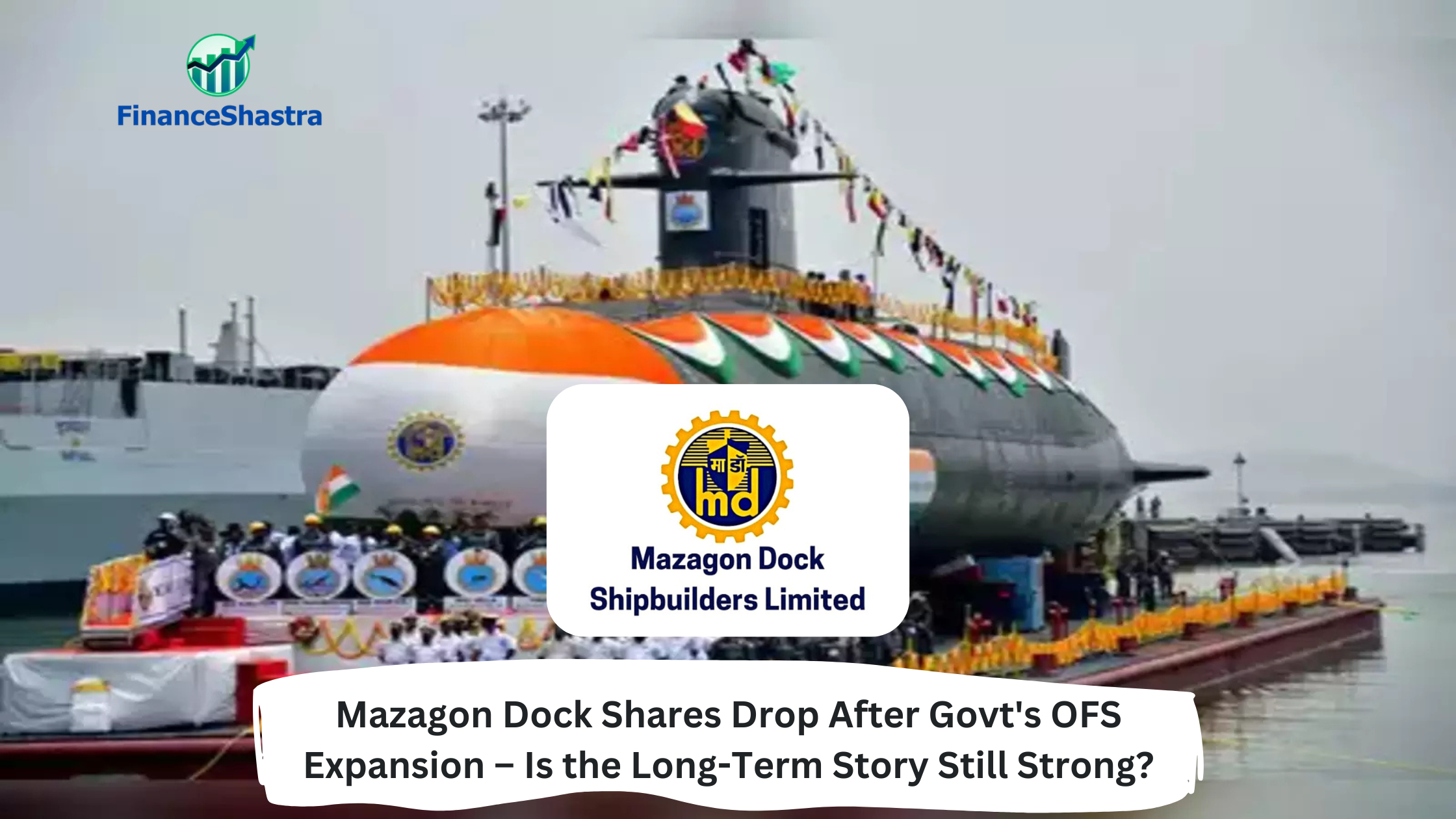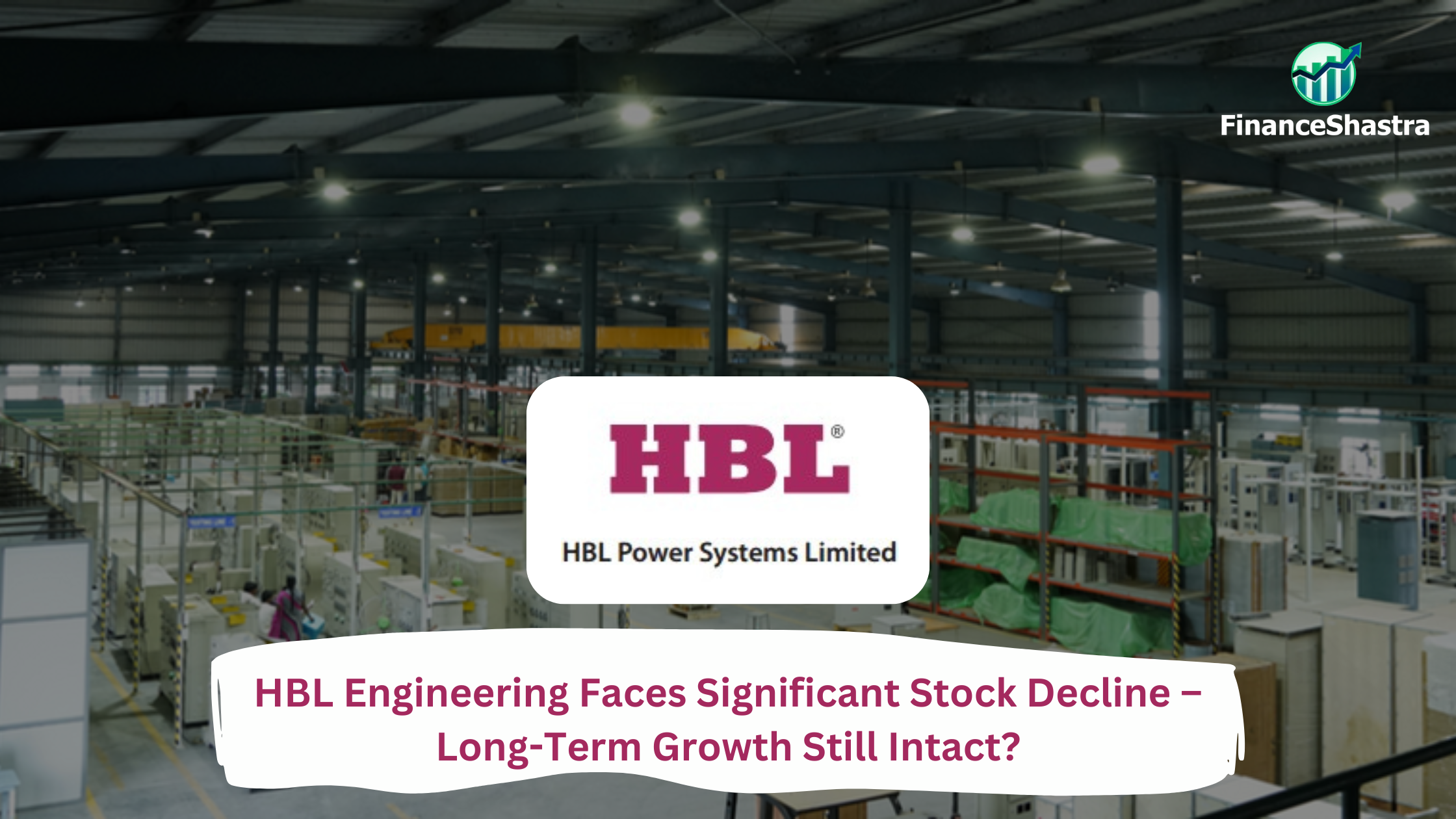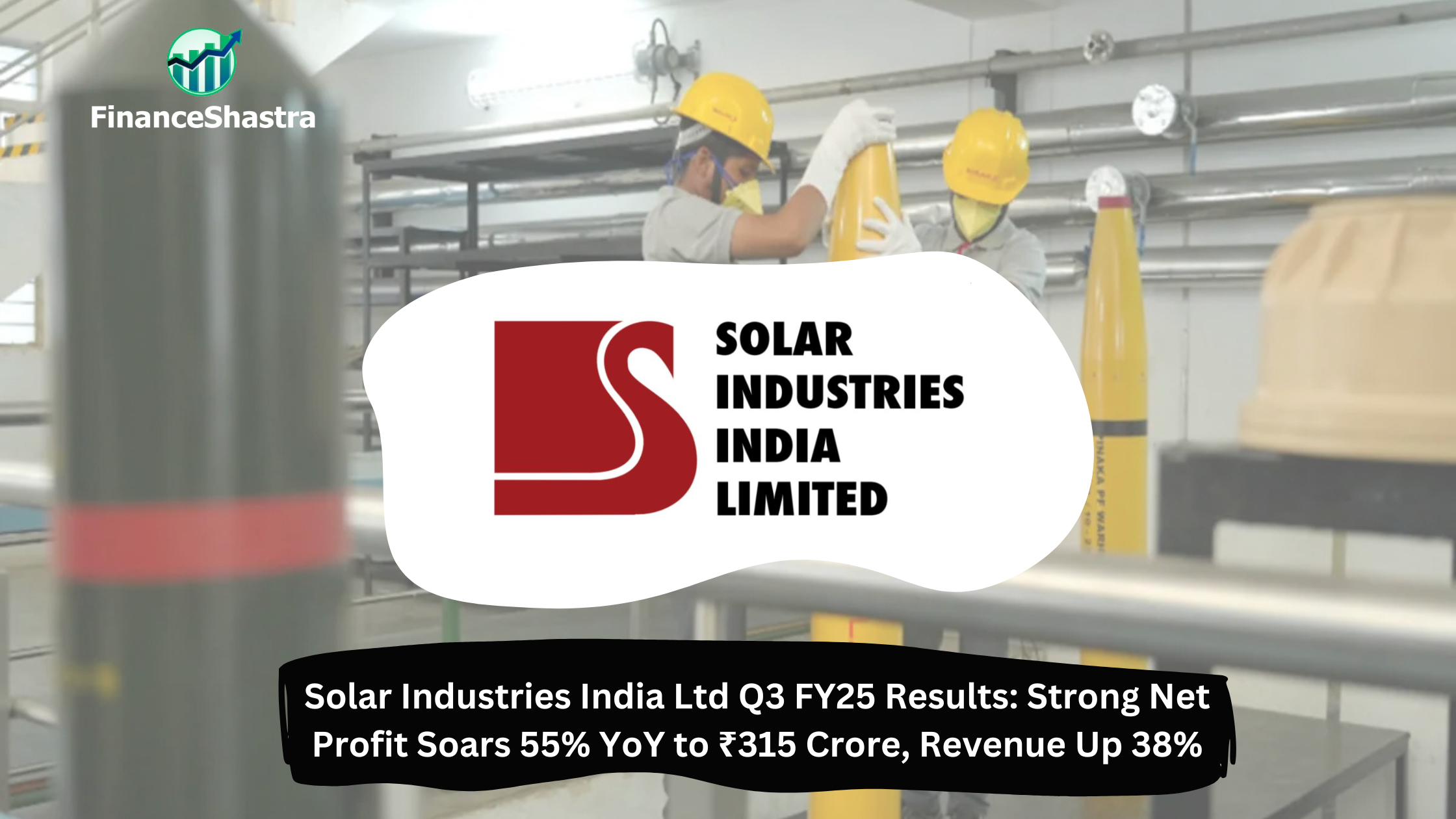Mazagon Dock Shares Drop After Govt’s OFS Expansion – Is the Long-Term Story Still Strong?
Business and Industry Overview:
Mazagon Dock Shipbuilders Limited (MDL) is a shipbuilding company. It is owned by the Government of India and works under the Ministry of Defence. Its main office and shipyard are in Mazagaon, Mumbai. MDL builds warships and submarines for the Indian Navy. It also makes ships for oil companies that work in the sea. These ships help in oil drilling and transporting materials. MDL also makes many other types of ships. These include tankers, cargo ships, passenger ships, ferries, patrol boats, missile boats, and tugs. It also makes platforms used in deep-sea oil drilling. Along with building new ships, MDL also repairs and upgrades old ships and submarines. The company is led by Vice Admiral Narayan Prasad (Retired). He became the Chairman and Managing Director in December 2019.
MDL has two main types of work – shipbuilding and submarine building. It builds ships and submarines for India’s defence needs. It also makes offshore oil platforms. MDL has the ability to build very large ships – up to 30,000 deadweight tons (DWT). Its shipyards are located on both the island and mainland parts of Mumbai.
In 2024, MDL had the space and capacity to build 11 submarines and 10 warships at the same time. It is also planning to grow more. MDL will spend around ₹5,000 crore (about $580 million) to expand its facilities. A major part of this money – over ₹1,000 crore – will be used to develop a new shipyard at Nhava, near Mumbai. The work at this new site includes building a jetty, doing dredging work, and setting up a floating dry dock.
The floating dry dock is being made by a private company called Shoft Shipyard in Gujarat. The dock will be made in parts and put together at the Nhava site. It will be able to hold eight large ships at the same time. This dock will help MDL build and repair bigger commercial ships and future Navy destroyers.
MDL is also making another ship repair and construction area on 15 acres of land leased from Mumbai Port Authority. It also plans to build a new graving dry dock, which is a special type of dock used to build or repair ships. These steps will double MDL’s capacity in the coming years. Submarine work will still be done in the current shipyard because submarines need special, smaller spaces.
In January 2024, MDL received a big contract worth ₹1,070 crore to build 14 fast patrol boats for the Indian Coast Guard. This shows the trust the government has in MDL’s abilities.
Today, MDL is one of India’s most important defence companies. It supports the Indian Navy and helps in making the country self-reliant in shipbuilding.
Latest Stock News:
Mazagon Dock Shipbuilders Limited (MDL) is facing a big fall in its stock price. In the last two days, the stock went down by 13.42%. On April 7, 2025, the stock fell by 7.95% in one day. This fall was more than the Sensex, which dropped by 3.42%. The main reason for this fall is the government’s decision to sell its shares. The Government of India said it will sell up to 4.83% of its shares in the company. It was first planned to sell 2.83%, but later added 2% more after good demand. The shares were sold at ₹2,525 each, which was 8% less than the market price. Because of this big sale, the number of shares in the market increased. This caused the price to fall. The stock price touched ₹2,207.30. Even after the fall, MDL’s stock is still above its 50-day, 100-day, and 200-day average prices. This means the stock is strong in the long term. But it is below its 5-day and 20-day averages, which shows weakness in the short term. The shipbuilding sector is also not doing well. It has dropped by 6.03%. MDL has a beta of 1.59. This means its stock moves up and down more than the market. So, the stock reacts more to market changes. Even though the stock is down now, MDL is still strong because it has many orders and is important for India’s defence. It may do well in the future.
Potentials:
Mazagon Dock Shipbuilders Limited (MDL) has big plans for the future. The company wants to grow more in the defence and shipbuilding sector. It is spending ₹5,000 crore (about $580 million) to expand its work. A large part of this money (more than ₹1,000 crore) will be used at its Nhava facility near Mumbai. This land is 40 acres in size. The company will build a new jetty (a place where ships can dock) and other important structures. MDL is also building a floating dry dock here. For this, it gave a contract of ₹475 crore to a private company called Shoft Shipyard in Gujarat. This dock is made of six blocks. Four blocks are ready. These will be moved to Nhava and joined together.
The floating dry dock will be very big. It will be 180 meters long, 44 meters wide, and 19.5 meters high. It can work on eight large ships (each weighing around 12,800 tonnes) at the same time. This dock will help MDL repair and build large commercial ships and new warships like the Next Generation Destroyers.
Apart from this, MDL is also planning to use 15 acres of land from Mumbai Port Authority. On this land, it will build a new shipbuilding and ship repair facility. It also plans to build a second large dry dock that is about 180 meters long and 60 meters wide. This will help the company double its shipbuilding and repair capacity. MDL is also ready to build more submarines in its current facility, because submarines need less space.
The company is also focusing on getting export orders. It wants to build ships for other countries. MDL aims to become a big name not just in India, but also in the world.
Analyst Insights:
- Market capitalisation: ₹ 92,457 Cr.
- Current Price: ₹ 2,292
- 52-Week High/Low: ₹ 2,930 / 1,045
- P/E Ratio: 33.5
- Dividend Yield: 0.59%
- Return on Capital Employed (ROCE): 44.2%
- Return on Equity (ROE): 35.2%
Mazagon Dock Shipbuilders Ltd. is a strong company with good performance. Its profit has grown well in the last five years with a 29% CAGR. In the last twelve months, its profit went up by 72%. The company has almost no debt. This means it is financially safe. It also uses its money well. The ROCE is 44.2% and ROE is 35.2%, which are very good. The company is the only one in India that can build submarines and destroyers. So, it gets many orders from the Indian government. This gives steady income for the future.
But the stock price has already gone up more than 130% in the last year. Now, it is expensive. It is trading at 12.8 times its book value. This shows that good news is already included in the price. The company also has very high contingent liabilities of ₹37,139 crore. This is more than 20 times its yearly revenue. If any of these liabilities become real, it can hurt the company. Also, its revenue growth has slowed recently. If there are delays or changes in government orders, it may face problems.
So, the company is strong but the stock price is high and risky. People who already have the stock can hold it or book some profit. It is not the best time to buy new shares.



